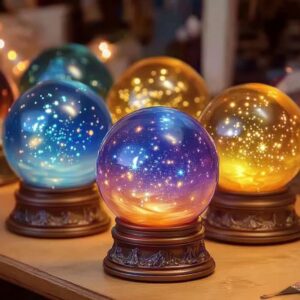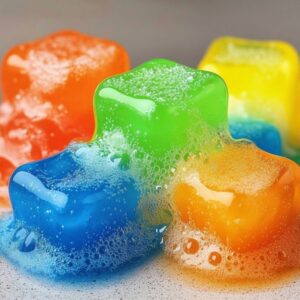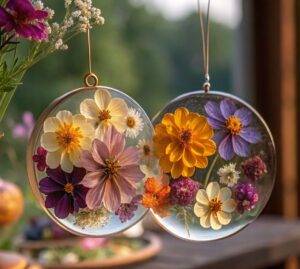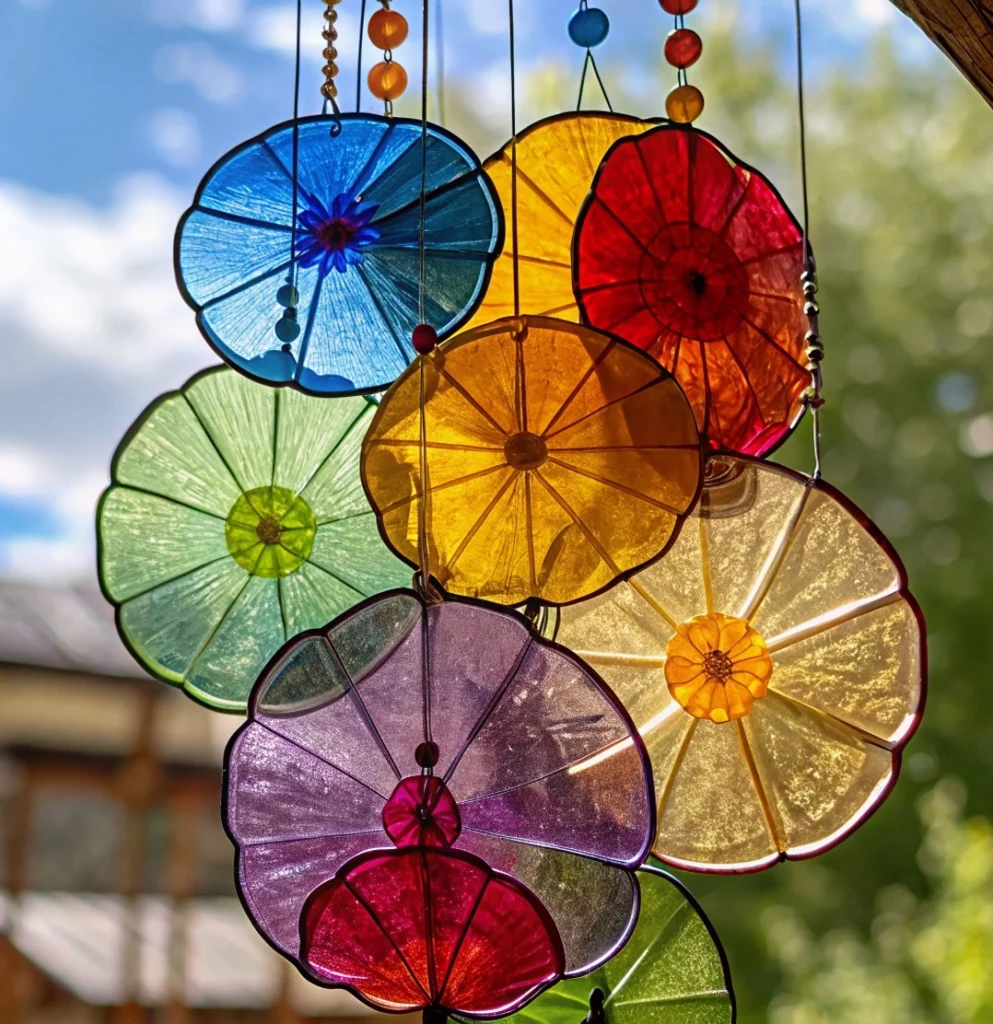
Introduction
Looking for an educational and eco-friendly craft project that brings science and creativity together? Bioplastic suncatchers are the perfect answer! These vibrant, flexible window hangings are made from natural ingredients and can be customized with colors, shapes, and textures. Whether you’re a parent, teacher, or DIY enthusiast, this activity offers an engaging and sustainable way to introduce kids to science, art, and environmental awareness.
Suncatchers made from bioplastics aren’t just beautiful; they’re also a clever way to learn about eco-friendly materials. This hands-on project teaches kids about biodegradable plastics while providing a creative outlet that doubles as home décor. Read on to discover how you can make your own stunning bioplastic suncatchers right at home.
Why You’ll Love This Craft
There are endless reasons to fall in love with bioplastic suncatchers:
- Eco-conscious: Unlike traditional plastic crafts, these suncatchers are biodegradable and safe for the environment.
- Kid-friendly: Easy to make and safe for children under supervision.
- Educational: Introduces STEM concepts like polymers, biodegradable materials, and color mixing.
- Customizable: Add petals, glitter, natural dyes, or fun shapes.
- Budget-friendly: Made with pantry staples, this project won’t break the bank.
Whether you’re using them to decorate windows for a season, teach a science lesson, or entertain kids during a rainy afternoon, this craft offers hours of joy and a tangible product to be proud of.
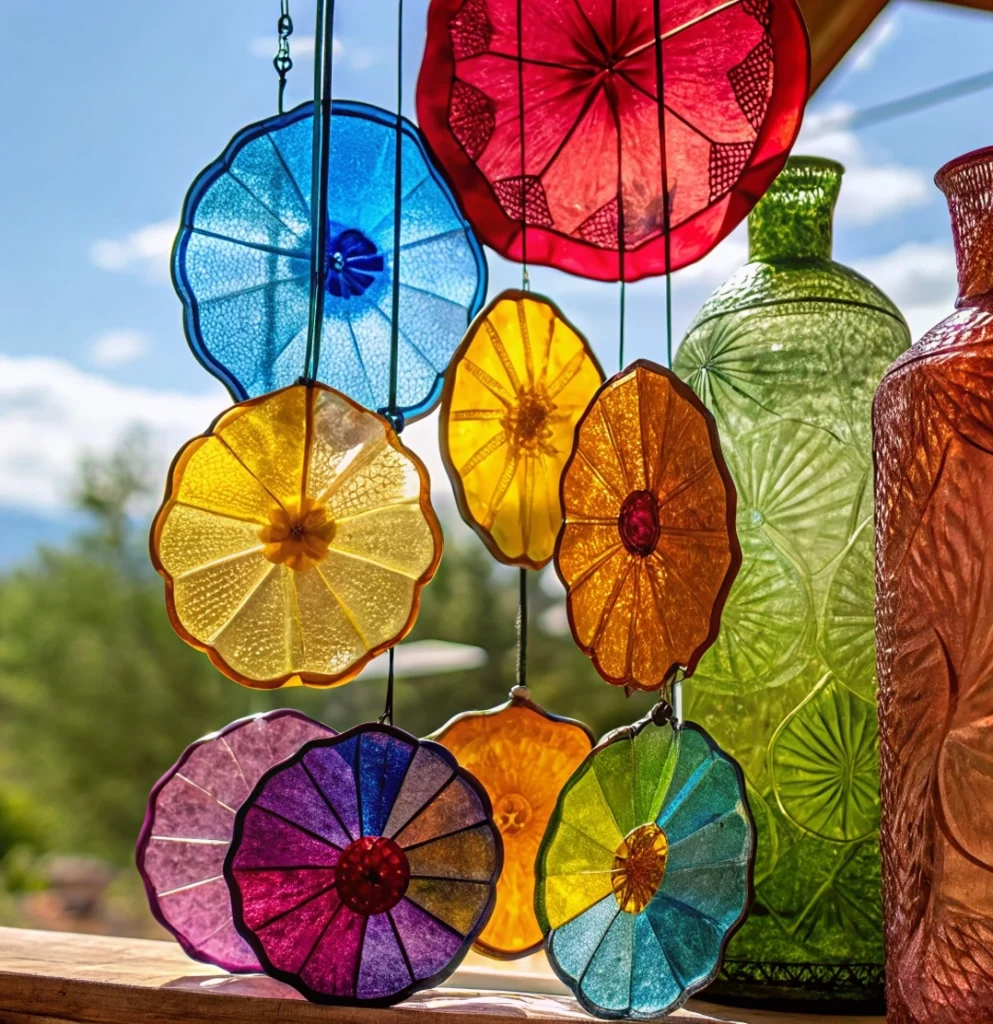
Ingredients
- 1/2 cup water
- 2 tbsp cornstarch
- 1 tbsp white vinegar
- 1 tbsp unflavored gelatin powder
- Natural or food-safe coloring (e.g., food coloring, beet juice, turmeric, spirulina)
- Optional: fine glitter, flower petals, or tissue paper for decoration
Necessary Tools
- Saucepan
- Mixing spoon
- Measuring cups and spoons
- Small bowls (for dividing the mixture and adding colors)
- Non-stick surface (plastic sheet, silicone mat, or parchment paper)
- Toothpicks (for swirling designs)
- Hole punch
- String or suction hooks for hanging
Ingredient Swaps and Additions
Want to switch things up? Here are some creative swaps and additions:
- Colorants: Replace food coloring with natural options like beet juice for pink, turmeric for yellow, or spirulina for green.
- Gelatin substitute: Use agar-agar as a vegan-friendly alternative (though results may vary slightly in texture).
- Decorations: Try dried leaves, colorful yarn pieces, or even recycled paper snippets for eco-art appeal.
- Shape molds: Pour the mixture into silicone molds instead of free-forming for clean shapes.
These variations add endless opportunities for personalization and learning, making every batch a unique creation.
Step-by-Step Instructions
- Prepare the Mixture: In a saucepan, combine 1/2 cup water, 2 tbsp cornstarch, 1 tbsp white vinegar, and 1 tbsp gelatin. Stir well to ensure no lumps remain.
- Heat and Thicken: Place the saucepan on medium-low heat. Stir constantly. After 3–5 minutes, the mixture will thicken into a gel-like consistency.
- Divide and Color: Remove from heat and divide the mixture into small bowls. Add colorants to each and stir until you reach the desired vibrancy.
- Shape and Decorate: On your non-stick surface, pour small amounts into circular or abstract shapes. Use a toothpick to swirl colors or embed flower petals, glitter, or bits of tissue paper.
- Drying Time: Let the creations air dry for 24–48 hours. Flip halfway through for even drying. They’re ready when they’re firm and peel off easily.
- Finishing Touch: Use a hole punch at the top of each dried suncatcher. Thread string through and hang in a window to admire their colorful glow!
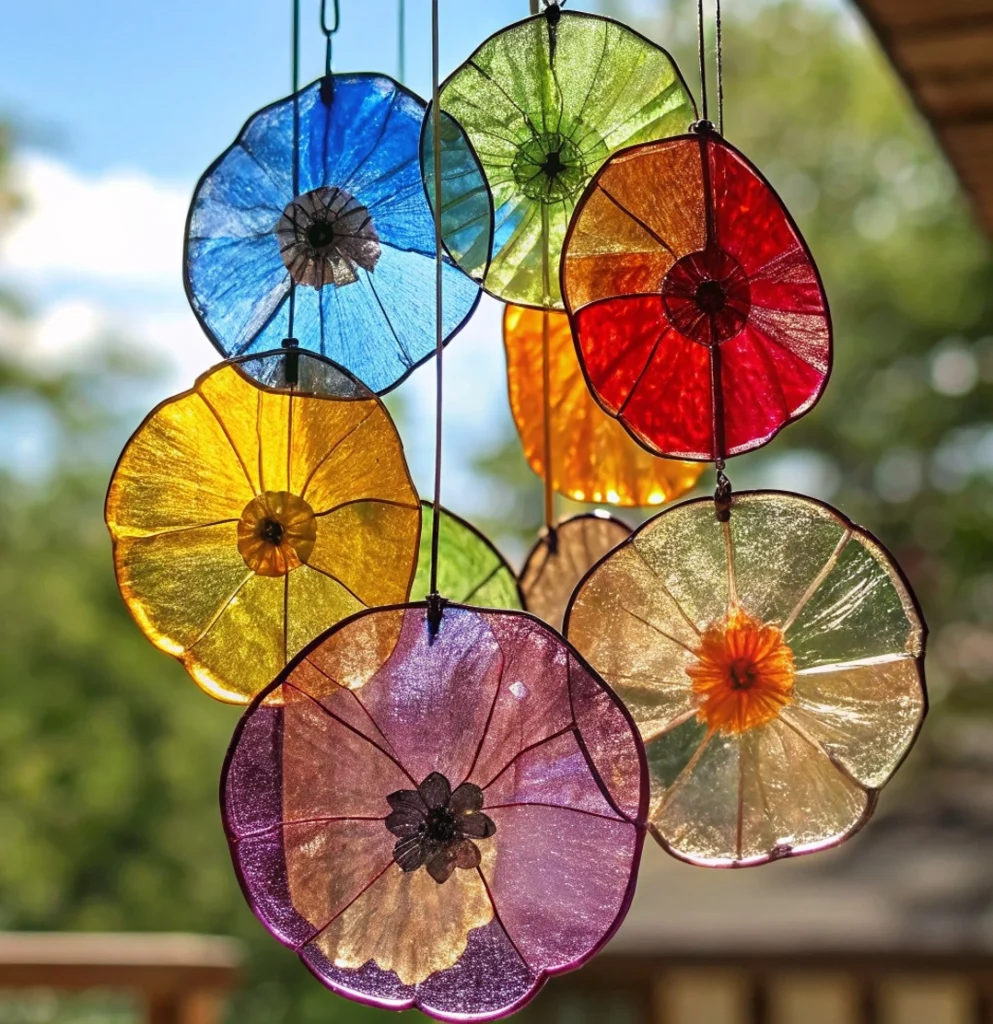
Pro Tips for Success
- Avoid overheating: Too much heat can cause the mixture to burn or bubble unevenly.
- Use warm water: Helps dissolve ingredients more evenly.
- Keep layers thin: Thinner layers dry faster and more evenly.
- Flip midway: Ensures both sides dry and prevents curling.
- Use a silicone mat: This makes peeling off the dried suncatcher a breeze.
Creative Ways to Display Bioplastic Suncatchers
- Window garlands: String several suncatchers together across a window.
- Mobile art: Hang them from embroidery hoops or branches to make eco-mobiles.
- Holiday ornaments: Use themed colors and shapes for seasonal decorations.
- Gift tags: Write names on dried pieces and use them as creative, biodegradable tags.
These versatile pieces add color, fun, and education to any room or event.
Storing and Shelf Life
- Storage: Keep finished suncatchers in a cool, dry place away from moisture.
- Lifespan: They generally last 1–2 weeks depending on humidity levels.
- Not for outdoor use: Rain or dew will break them down quickly.
Because they’re biodegradable, their impermanence is part of the charm. It’s a great way to teach children about eco-conscious choices and temporary art.
Nutritional Information
While this isn’t an edible recipe, for safety and interest, here’s a breakdown of key ingredients:
- Cornstarch: Plant-based thickener
- Vinegar: Natural preservative
- Gelatin: Protein derived from animal collagen (or agar-agar as a vegan substitute)
- Natural Colorants: Safe, non-toxic additives
All ingredients are non-toxic, but suncatchers should not be consumed.
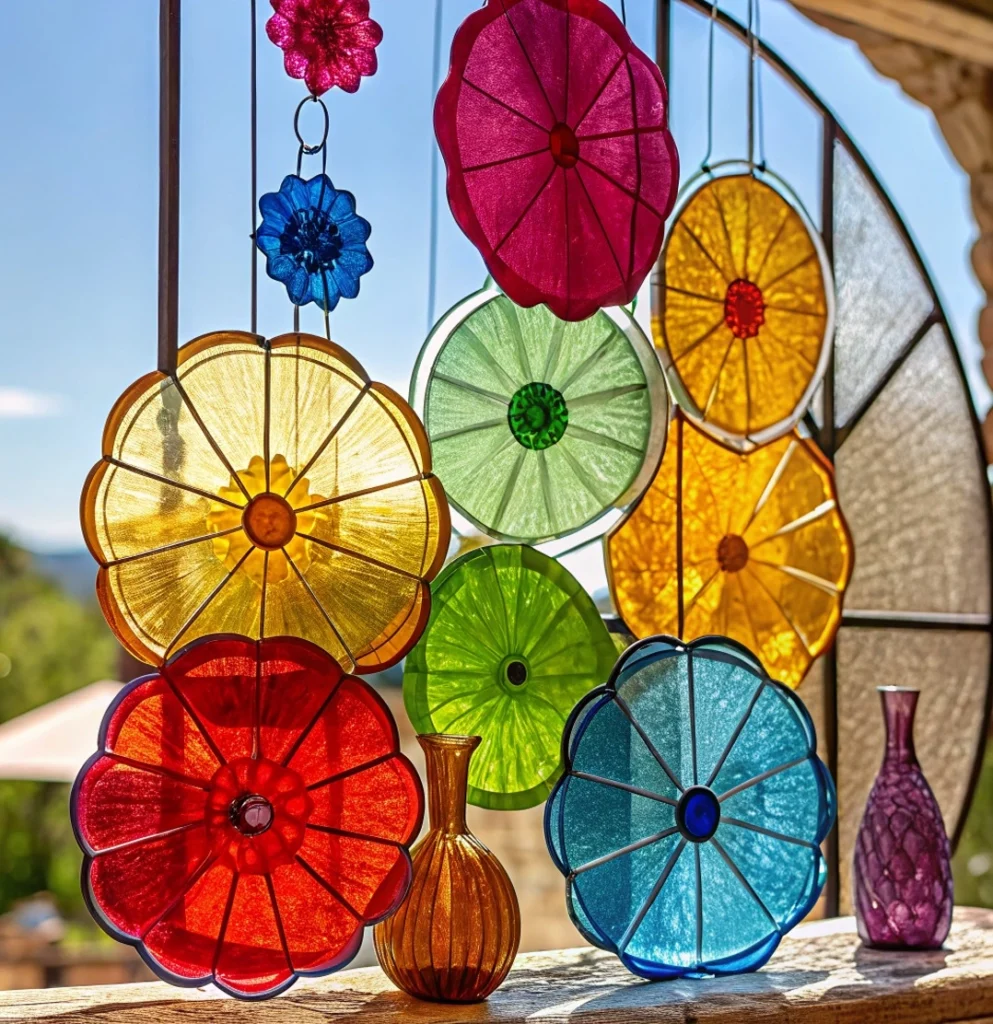
FAQs
1. Are bioplastic suncatchers safe for kids? Yes, when supervised. All ingredients are non-toxic, though not meant for consumption.
2. Can I use agar-agar instead of gelatin? Yes! The texture may differ slightly, but it’s a great vegan-friendly substitute.
3. Why are my suncatchers cracking? They may have dried too quickly or the mixture was too thick. Try thinner layers next time.
4. Can I speed up drying in the oven? Air drying is best, but a low-temperature oven (under 150°F/65°C) may be used cautiously.
5. Will they melt in the sun? No, but prolonged exposure to moisture may cause them to degrade.
Conclusion
Bioplastic suncatchers are a magical blend of art and science, sustainability and creativity. This craft not only beautifies your space but also empowers kids with hands-on learning about environmentally friendly materials. With endless opportunities for color, shape, and decoration, it’s an ideal project for curious minds and eco-conscious families. Gather your supplies, stir up some bioplastic magic, and let your windows shine!
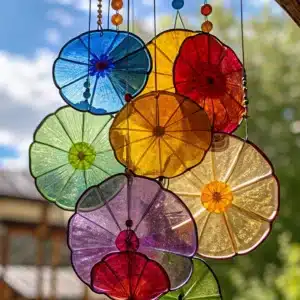
Bioplastic Suncatchers
Ingredients
Method
- In a saucepan, combine 1/2 cup water, 2 tbsp cornstarch, 1 tbsp white vinegar, and 1 tbsp gelatin. Stir well to ensure no lumps remain.
- Place the saucepan on medium-low heat. Stir constantly. After 3–5 minutes, the mixture will thicken into a gel-like consistency.
- Remove from heat and divide the mixture into small bowls. Add colorants to each and stir until you reach the desired vibrancy.
- On your non-stick surface, pour small amounts into circular or abstract shapes. Use a toothpick to swirl colors or embed flower petals, glitter, or bits of tissue paper.
- Let the creations air dry for 24–48 hours. Flip halfway through for even drying. They’re ready when they’re firm and peel off easily.
- Use a hole punch at the top of each dried suncatcher. Thread string through and hang in a window to admire their colorful glow!

